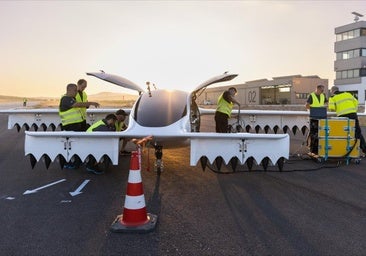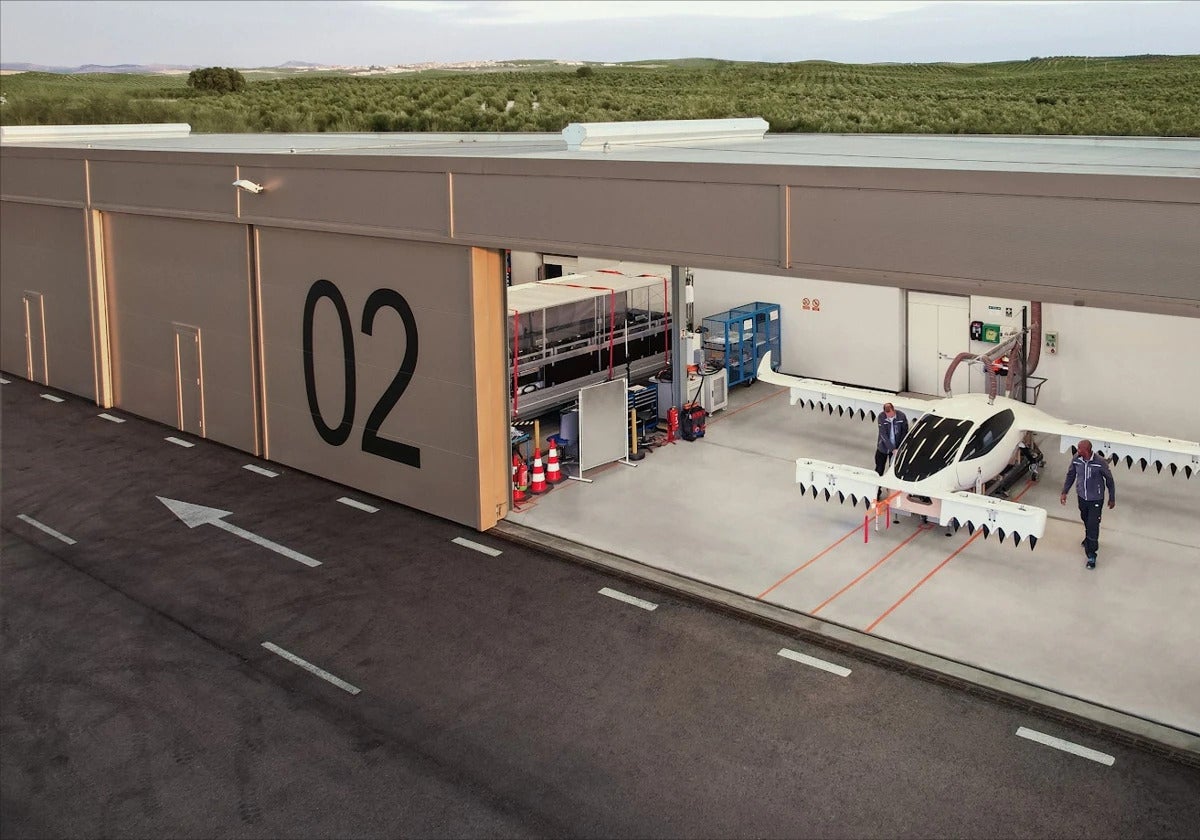Manned air taxi drones could be operating on Costa del Sol by end of 2026 although test flights will begin next year
Malaga will be one of the first cities in Europe to offer trips for paying passengers onboard the futuristic aircraft
The Costa del Sol is already on the starting block for the new air mobility race. Enaire, the state body in Spain that manages airspace, together with control tower professionals, have made Malaga Airport one of the pioneering airports in the development of the new vertical take-off and landing aircraft (Vtol). Although European regulations will initially require these aircraft to be manned, in the longer term it is expected that routes will be operated by autonomous drones.
The timetable is as follows: validation flights of the specific procedures for air taxis will be carried out around October or November next year. These will be done initially with conventional helicopters, and not yet in the drone aircraft that are currently being built. The route will be between Malaga and Granada, and the date chosen is due to the fall in the amount of air traffic that usually occurs at that time, which will allow the tests to be carried out with less risk.
Marc Olmo, one of the engineers in charge of the drone business development department at Enaire, said: "The aim is to establish flight procedures for commercial aircraft". To do this, we are going to establish vertiports (the space for vertical landing and take-off) that will initially be "virtual", that is, marked areas within the runways where the Vtol (which is the technical name given to these new vehicles) carry out their operations. Currently, there is already an area established on runway 13/31 at Malaga Airport.
In this first phase of the operation, the aim is to define the flight procedures connecting the Malaga and Granada airports. In this period, Lilium, which is the drone manufacturer with which Enaire is collaborating, will be focused on certification flights. However, if all goes well, by March 2026, flights with the Lilium aircraft will be on the cards
Ready for take-off
Once the procedures are certified, if all goes well, by the end of 2026 the first aerotaxis could arrive in Malaga. That's two and a half years, which is a really tight timeframe.
For the time being, the European Aviation Safety Agency (EASA) does not allow the certification of unmanned passenger aircraft. And this will be the case for at least the next five years. Within this framework, Malaga Airport is participating in the two leading European projects that will make this type of operation possible: Ensure and OperA.
The European Aviation Safety Agency does not yet allow unmanned aircraft, but will do so in the medium term.
The idea is to define the vertiports and flight procedures to make aerotaxis a reality. The Granada-Jaén aerodrome is also participating in this initiative. "The moment it is possible to fly without a pilot it will be extrapolated, it will not start from scratch," added Marc Olmo.
Malaga is therefore in a pioneering position. "It is one of the first airports we are working with, and we find it very interesting because it is one of the sites with the most traffic. Added to this is the high technical level of experience and the involvement of the professionals in its control tower."
This team is led by Raúl Delgado, head of this infrastructure. "Malaga is at the sharp end. Tests are being carried out in other places, but this is where Enaire has opted to carry out the most important tests".
"Malaga stands out for being the testing ground of Enaire, which is the manager of Spanish airspace," said the aeronautical engineer who is an expert in this industry. "It is a pioneer because here the projects are led by the airspace manager, connected to the State Aviation Safety Agency (AESA), which provides the peace of mind that they know what they are doing and that they are taking safe steps at a regulatory level."
But it turns out that the region also plays an important role, as a base for test flights and certification, both in Villacarrillo (Jaén) and at the Sebastián Almagro aerodrome in Palma del Río (Cordoba). "Andalucía holds an important position in the world of passenger drones."


